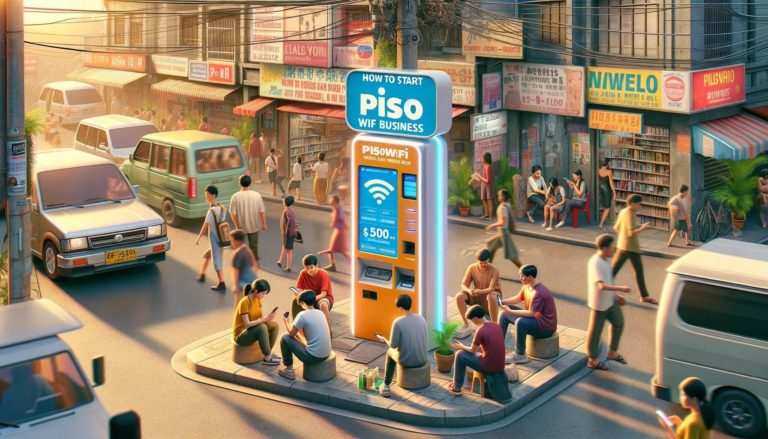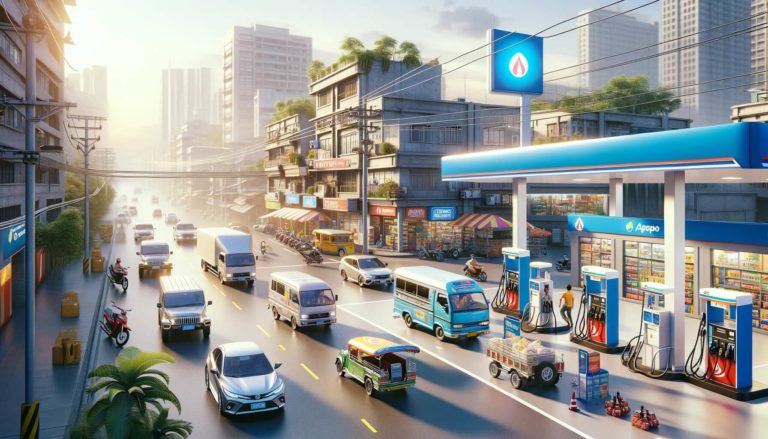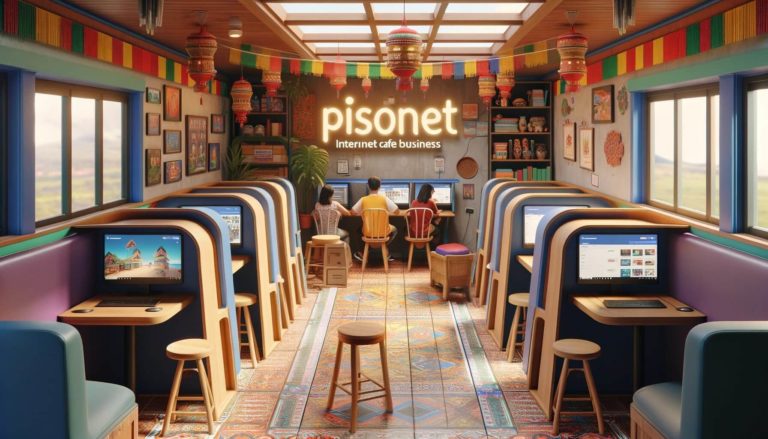How To Start A Water Refilling Station Business

If you’ve ever considered starting your own business in the Philippines, the water refilling station industry might be worth looking into. With a growing demand for clean and safe drinking water, this business has gained popularity in recent years. By providing affordable and convenient access to purified water, you can tap into a lucrative market. You’ll need to consider factors such as location, licensing requirements, and initial investment costs, but with the right planning and execution, a water refilling station could be a promising venture.
Overview of the Water Refilling Station Business
Starting a water refilling station business can be a lucrative venture, considering the constant demand for clean and safe drinking water. With the increasing pollution and contamination of natural water sources, people are becoming more conscious of the quality of the water they consume. This creates an opportunity for entrepreneurs to provide a reliable and convenient source of purified water.
A water refilling station operates by sourcing water from secure and reliable sources, treating it using various purification processes, and ensuring its quality through frequent testing. The purified water is then sold to customers in various formats, such as bottled water, water containers, or even through water dispensers installed in households or commercial establishments.
This article will delve into various aspects of the water refilling station business, including market analysis, costs and investments, business models, location considerations, water sources and treatment, marketing and promotion strategies, pricing and revenue generation, operational considerations, and financial projections.
Market Analysis
Demand for Clean and Safe Drinking Water
One of the key drivers of the water refilling station industry is the growing demand for clean and safe drinking water. The increasing pollution levels and waterborne diseases have highlighted the importance of access to purified water. This demand is further fueled by factors such as an increasing population, urbanization, and the rise in health-conscious consumers.
A study conducted by the World Health Organization estimates that more than 2 billion people globally suffer from illnesses caused by contaminated drinking water, emphasizing the need for reliable water sources. In the Philippines, where the water refilling station business is popular, the demand for purified water continues to rise.
Competition and Market Size
The water refilling station business in the Philippines is a competitive market, with both franchised and independent stations vying for customers. The market size is considerable, given the country’s population of over 100 million people. According to the Department of Trade and Industry, there are over 20,000 water refilling stations registered in the Philippines as of 2020.
While competition can pose challenges to new entrants, it also signifies the demand for purified water in the market. Differentiating your business through quality, service, and branding can help create a niche and attract a loyal customer base.
Trends and Growth Potential
The water refilling station industry is witnessing several trends that influence its growth potential. Firstly, there is an increasing focus on sustainability and environmental responsibility. Customers are looking for businesses that minimize their environmental impact through initiatives such as recycling and using eco-friendly packaging materials.
Secondly, with the advent of technology, there is a growing demand for automation and convenience. Water refilling stations can adopt digital payment systems, delivery services, and automated dispensers to cater to this trend.
Moreover, the rise of health and wellness consciousness among consumers presents an opportunity for water refilling stations to offer value-added products such as alkaline or mineral-infused water.
Costs and Investment
Setting up a water refilling station involves various costs and investments. It is essential to carefully estimate these expenses to ensure a successful and sustainable business.
Cost of Setting Up a Water Refilling Station
The cost of setting up a water refilling station primarily depends on the scale and complexity of the business. On average, the initial investment can range from ₱500,000 to ₱2,000,000. This cost includes expenditures on equipment, water storage tanks, purification systems, renovation or construction of the facility, and other startup expenses.
Equipment and Maintenance Expenses
The equipment needed to operate a water refilling station includes water storage tanks, filtration systems, water pumps, bottling machines, water dispensers, and packaging materials. These costs can vary depending on the capacity and technology used.
Maintenance expenses should also be considered, as regular servicing and replacement of filters and other components are necessary to ensure the efficiency and quality of the purified water.
Operating Expenses
Aside from the initial investment, there are ongoing operating expenses involved in running a water refilling station. These expenses include electricity, water supply, payment for staff, marketing and advertising costs, rental fees (if applicable), and miscellaneous expenses.
It is crucial to keep track of these costs and regularly review the pricing strategy to ensure profitability.
Licensing and Permit Costs
To operate legally, water refilling stations need to obtain the necessary licenses and permits from government agencies. These include a barangay permit, mayor’s permit, sanitary permit, and permit from the Department of Health. The costs associated with acquiring these permits may vary depending on the location and regulatory requirements.
Business Models
When starting a water refilling station, entrepreneurs have the option to choose between franchising or operating as an independent business.
Franchise Opportunities
Franchising allows entrepreneurs to leverage an established brand, operational systems, and marketing support. It provides a sense of security and reduces the risks associated with starting a business from scratch. Franchise opportunities in the water refilling station industry include well-known brands such as Aquabest, Crystal Clear, and Wilkins.
However, franchising also comes with certain obligations, such as payment of franchise fees and adherence to the franchisor’s rules and regulations. It is important to carefully review the franchise agreement and conduct thorough market research before deciding on a particular franchise opportunity.
Independent Water Refilling Stations
Operating as an independent water refilling station provides more flexibility and control over the business’s operations and branding. Entrepreneurs have the freedom to choose their own suppliers, equipment, and marketing strategies. However, this also means taking on the responsibility of building brand awareness and establishing trust with customers.
Independent stations can differentiate themselves by offering unique purification processes, personalized customer service, or specialized water product offerings.
Location Considerations
Choosing the right location is crucial for the success of a water refilling station. Consider the following factors when selecting a location:
Ideal Locations for Water Refilling Stations
Water refilling stations thrive in densely populated areas, especially near residential communities or commercial establishments. Look for locations with limited access to clean water or areas where the quality of tap water is questionable. Other potential locations include near schools, industrial zones, or areas with high foot traffic.
Rental Costs and Availability
The cost of renting a space for your water refilling station can vary depending on the location and size of the facility. Conduct thorough market research to determine the average rental costs in your target area. It’s also important to consider the availability of rental spaces and negotiate favorable lease terms.
Accessibility and Foot Traffic
Ensure that your chosen location is easily accessible to customers, with ample parking space if necessary. Consider the foot traffic in the area, as this can significantly impact your business’s exposure and potential customer base.
Water Sources and Treatment
Securing a reliable and safe water source is the backbone of a successful water refilling station business. Consider the following factors when selecting water sources and designing the treatment processes:
Secure and Reliable Water Sources
Water sources can include deep wells, local water utilities, or commercial suppliers. It is crucial to ensure that the water source is reliable and meets the necessary quality standards set by regulatory bodies. Conduct regular tests and inspections to verify the source’s safety and quality.
Water Treatment and Purification Processes
The purification process is a critical step in ensuring the quality of the water you provide to customers. Common purification methods include sediment filtration, activated carbon filtration, reverse osmosis, and ultraviolet disinfection. The appropriate combination of these processes depends on the quality of the source water and regulatory requirements.
Quality Control and Testing
To ensure consistent quality, implement a robust quality control system. Regularly monitor and test the purified water for factors such as pH level, total dissolved solids (TDS), and bacterial contamination. Train your staff on quality control protocols and maintain proper documentation of test results for reference and compliance purposes.
Marketing and Promotion
Creating a strong brand identity and implementing effective marketing strategies are essential for attracting and retaining customers. Consider the following marketing considerations:
Creating a Brand Identity
Develop a memorable brand name and logo that portrays trust, professionalism, and reliability. Invest in high-quality packaging materials, such as bottles or containers, that reflect your brand’s image. Ensure consistency in branding across all marketing materials and channels.
Target Market Segmentation
Identify your target market segments based on demographics, lifestyle, and preferences. This can help tailor your marketing messages and promotions to specific customer groups. For instance, target health-conscious consumers by highlighting the health benefits of your purified water.
Marketing Strategies and Tactics
Utilize various marketing channels to reach your target audience. This can include digital marketing through social media platforms, website development, search engine optimization, and online advertising. Traditional marketing methods such as print advertisements, flyers, and billboards in strategic locations can also be effective. Engage in community events or sponsor local initiatives to build brand recognition and trust.
Pricing and Revenue Generation
Determining the pricing for your water products is crucial for profitability. Consider the following factors when setting your prices:
Determining Pricing for Water Products
Research the market prices in your area to understand the average rates for purified water. Consider your production costs, overhead expenses, and desired profit margin when setting your prices. Take into account the pricing strategies of competitors to remain competitive while offering value to your customers.
Additional Revenue Streams
Maximize revenue generation by diversifying your product offerings. Consider selling water-related accessories, such as water bottles, water dispensers, or water filters. Offer value-added services, such as water delivery or installation of water dispensers, to cater to customer convenience.
Operational Considerations
Efficient operations are vital for the success of a water refilling station business. Consider the following operational aspects:
Staffing and Training
Hire a competent and reliable staff who understand the importance of quality control and customer service. Provide training to your employees on the purification processes, quality control protocols, customer engagement, and sales techniques. Regularly review and evaluate the performance of your staff to maintain high standards.
Scheduling and Inventory Management
Develop an effective scheduling system to ensure that production and delivery are adequately managed. Maintain inventory records to avoid stockouts or excess inventory. Implement efficient supply chain management practices to minimize waste and maximize profitability.
Customer Service and Satisfaction
Prioritize excellent customer service to build a loyal customer base. Train your staff to provide prompt assistance, address customer concerns, and maintain professionalism. Implement feedback mechanisms to gather customer insights and continuously improve your services.
Financial Projections
To ensure the financial viability of your water refilling station business, conduct comprehensive financial projections. Consider the following elements:
Sales Forecast
Estimate your expected sales based on factors such as market demand, pricing strategy, and customer acquisition plans. Consider seasonal fluctuations and potential growth opportunities.
Cost Analysis
Analyze all cost components, including fixed and variable costs, to determine the break-even point and profit margins. Regularly review and monitor the expenses to identify potential cost-saving measures.
Profit Margin Calculation
Calculate your projected profit margins based on the estimated revenue and costs. Benchmark your profit margins against industry standards to ensure profitability and sustainability. Continuously evaluate and adjust your pricing and cost structure to maximize profitability.
In conclusion, the water refilling station business presents a promising opportunity in the Philippines due to the increasing demand for clean and safe drinking water. By conducting thorough market analysis, carefully estimating costs and investments, choosing the right business model and location, securing reliable water sources, implementing effective marketing strategies, and considering operational and financial aspects, entrepreneurs can establish a successful and profitable water refilling station.






